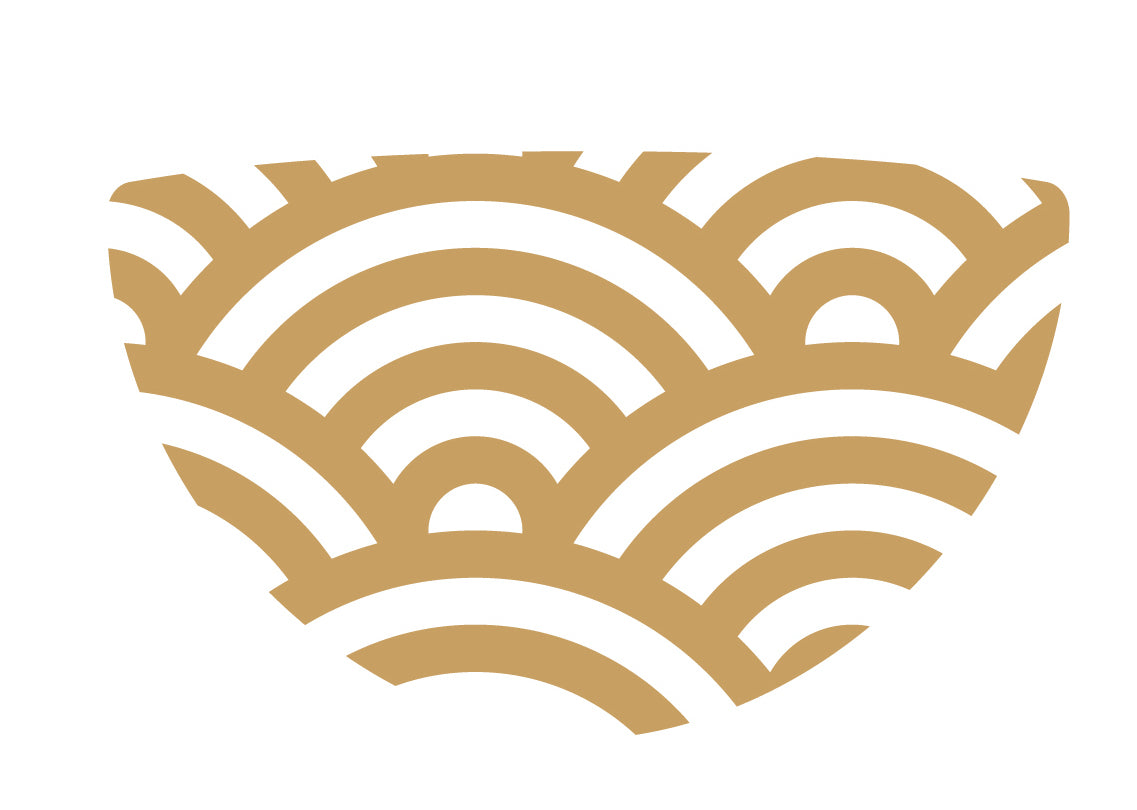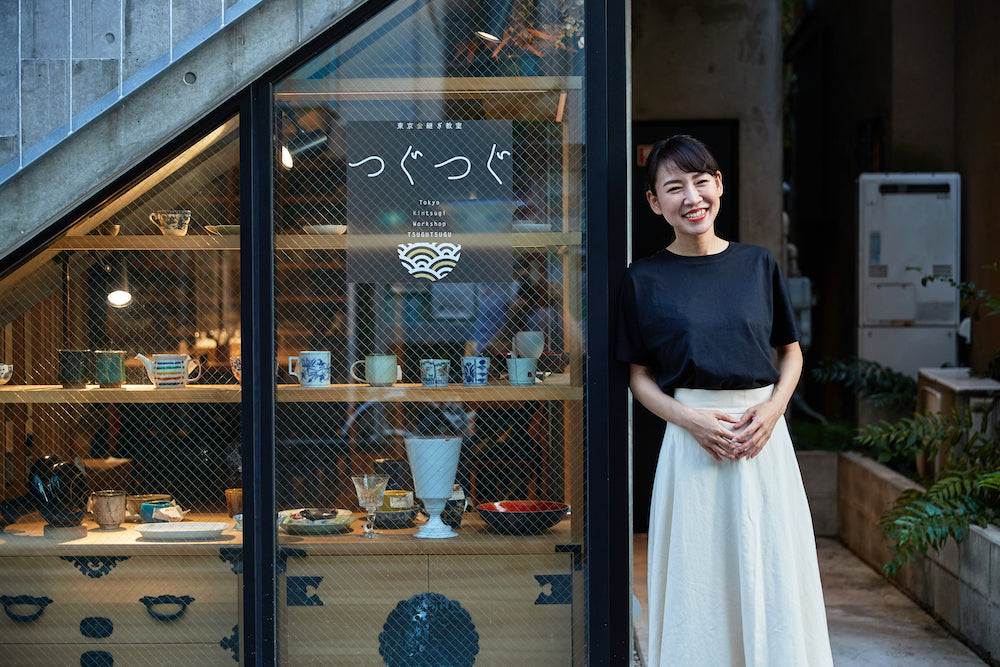
In order to bring kintsugi closer to you and enable you to give a new life to broken pieces of ceramic dear to you, we have opened two kintsugi studios in Ebisu and Asakusa, Tokyo.
What is “kintsugi”?
"Kintsugi" is a traditional repair technique used in Japan for centuries to mend broken ceramics. With kintsugi, areas of breakage are not hidden but highlighted with gold. The traditional way of practicing kintsugi is by using the tree sap of the lacquer tree, also known as urushi lacquer, to put broken pieces back together and fill any chips. The use of urushi for restoration dates back to as far as the Jomon period (around nine thousand years ago).
The practice of using gold to highlight the scars of the restored items became very popular with the establishment of a strong Japanese tea culture. Tea ceremony was developed around zen concepts such as wabisabi, which celebrates the impermanence and unperfectness of beauty.
When an item is restored with kintsugi, the aim is not to restore the object to its original state but to embrace its history of breakage by adding gold powder over the restored areas. Thanks to the gold touches, the restored object has much more value than before it was broken. With kintsugi, an event usually perceived negatively (breakage) can be turned into a positive result.
Kintsugi is regarded as an art form itself and it is now trending not only in Japan but also abroad, where it is often seen as a metaphor for the overcoming of emotional and physical traumas.

What are the steps of kintsugi repair?
The first thing to know is that urushi lacquer is the main ingredient used in traditional kintsugi repair. Depending on the objective of each step, the lacquer is mixed with various powders to attain different levels of viscosity and thickness. Urushi is used as a natural glue to put broken parts back together, as a filler to fill chips and gaps, and as coating to make the restored joints waterproof or add a decorative finishing layer.
If we break down the restoration in simple steps, it looks like this:
- Step 1: Apply urushi on the broken surface and/or the chipped area, and leave it in the urushi drying box.
- Step 2: Stick the broken pieces together and/or fill the chipped area with urushi, and leave it in the urushi drying box.
- Step 3: Fill the small holes with urushi paste to uneven the broken/chipped surface. Leave it in the urushi drying box.
- Step 4: Apply black urushi and leave it in the urushi drying box.
- Step 5 : Apply bengal-red urushi, sprinkle gold powder, and leave your item in the urushi drying box.
You may have the impression that this is a lot of steps. But, with kintsugi, the slow process makes the end result even more rewarding ! We are convinced that, with qualified teachers, any beginners can try their hand at kintsugi and successfully repair the broken ceramics !!

Why are we focusing on traditional kintsugi?
Kintsugi encompasses a wide range of techniques that can sometimes intertwine with other crafts, but kintsugi restoration is usually divided into two methods: traditional kintsugi and modern kintsugi.

Traditional kintsugi is based on the use of natural ingredients such as urushi lacquer and gold. (above photo)

Modern kintsugi relies on the use of fast-drying chemical resins such as epoxy.
Traditional kintsugi is the method we focus on at Tsugu Tsugu. We have decided to exclusively use and teach traditional kintsugi because we attach a lot of importance to the durability and the quality of kintsugi repair. Compared to modern kintsugi, traditional kintsugi takes more time, but the result is much neater and far more durable.
In addition, traditional kintsugi is the only kintsugi method that is food safe. Urushi, gold powder, as well as silver powder in the case of gintsugi, are all food grade ingredients, unlike chemical glues. This point is very dear to us because we want to ensure that each object restored in our studio can be used like it was before without any worry.
Tips to Master Traditional Kintsugi

The most important factor to successfully complete a kintsugi restoration is to not rush and focus on each step, one by one.
Some steps require more time and concentration than others. It cannot be helped. In addition, urushi itself requires time to harden properly. Depending on the seasons and on the type of urushi layer applied, the hardening process of urushi can take from a day to up to more than a week. It is important to monitor the humidity levels and temperature of your urushi box and make adjustments if necessary to ensure that urushi is hardening properly. Generally speaking, the more you wait, the harder urushi will be. Kintsugi is a craft that rewards patience. When the time comes to apply the finishing layer, gold powder will dusted over the restored cracks and filled chips you have been working on for weeks and you will see that it was worth the wait.
Learning Kintsugi with Tsugu Tsugu
One core mission of Tsugu Tsugu is to share the beauty and philosophy of kintsugi with as many people as possible. To this end, we created a kintsugi kit, the TSUGUKIT, and we later opened two kinstugi studios in Tokyo, first in Ebisu and then in Asakusa.
Whether you would like to learn kintsugi on your own or with a teacher, Tsugu Tsugu intends to provide the right tools and support you in your kintsugi endeavors.
Finding the right material and learning how to use it may sound like a challenge depending on where you live. However, the TSUGUKITs provide you with all the necessary materials and instructions to get started with kintsugi. And, if you have your own TSUGUKIT, you can also book online classes with our instructors (in English or Japanese)
If you happen to be in Tokyo, we would highly recommend you to pay us a visit at our studio in Ebisu or Asakusa. With our Kintsugi Discovery Experience, you can get a first taste of what kintsugi repair looks like. If you decide to sign up for our regular courses, you will learn a wide range of traditional techniques to repair different types of breakage. While guiding you through each step, our instructors will explain to you in detail the background of kintsugi and the reasons behind each step of the repair process.
Most of our students are complete beginners but, even as a beginner, with practice, it is possible to obtain a good end result. Kintsugi may be a long process, but there is nothing like seeing the end result of a long repair project, especially when you have just given a new life to an object that already meant a lot to you.
Our students also regularly mention that they find kintsugi classes very relaxing.
The photos below are kintsugi works completed by some of our students :









One-day Kintsugi Workshops and Regular Classes
For those with only one day to experience Kintsugi, our 90-minute Traditional Kintsugi Workshop offers the perfect introduction.
For those worried about lacquer allergies, wanting to join with children under 10, or simply looking for a quick introduction to kintsugi, we now offer a 60-minute Modern Kintsugi Workshop using no real lacquer.
If you’re staying in Japan for a week or more and can attend at least five classes, becoming a member and joining our kintsugi course is the best way to improve your skills and build confidence.
How to Book our Kintsugi Classes/Workshops?
Check the details and reserve your seats from this page【Click here】
Do not hesitate to contact us for any questions you may have regarding our kintsugi courses or kintsugi in general !


2 comments
Thank you for your comment.
It seems you are interested in participating in the workshop (WS).
We will send you the details via email shortly.
We would appreciate it if you could confirm the information.
Thank you for your cooperation, and we look forward to your participation.
My wife and I would like to learn Kintsugi. We will be in Tokyo on April 24 in the Asakusa area.
Which location should we apply for?
Thank you.